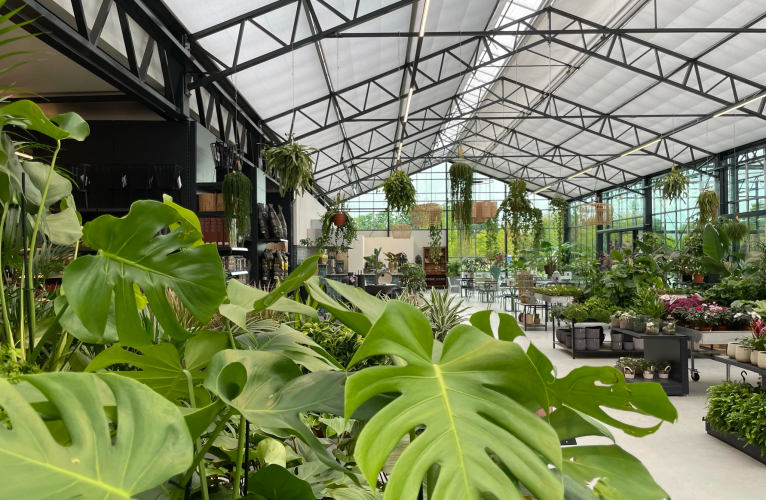Transforming Landscapes with Innovation: The Rise of Botanical Glasshouse and Garden Nursery Design

In recent years, the global landscape design and horticultural industry has seen an inspiring transformation driven by sustainability, architectural creativity, and a renewed passion for nature. At the heart of this revolution lies the concept of the Botanical Glasshouse and its seamless integration with modern Garden Nursery Design. These green innovations are not only reshaping public parks and botanical gardens but are also revolutionizing private estates, urban spaces, and commercial environments. Companies like greenconceptors are at the forefront of this green evolution, providing cutting-edge designs that bring plant life into everyday architecture.
A Botanical Glasshouse is more than just a greenhouse. It is a sophisticated, climate-controlled environment designed to house a diverse range of plant species from around the world. Unlike traditional greenhouses, these glasshouses often serve as architectural masterpieces—blending science, sustainability, and aesthetics. They’re engineered to regulate humidity, light, and temperature to mimic natural ecosystems, which allows them to sustain rare and exotic plants year-round.
One of the most significant advantages of a Botanical Glasshouse is its ability to serve as a microcosm of biodiversity. This makes them valuable not only as ornamental features but also as educational and conservation tools. Inside, one may encounter tropical palms, delicate orchids, succulents, and medicinal herbs, all coexisting in harmony. These glasshouses have become vital in plant conservation efforts, helping to protect species threatened by climate change and habitat destruction.
Moreover, as urban environments continue to expand, integrating green spaces into concrete jungles has become essential for ecological balance and human well-being. This is where thoughtful Garden Nursery Design becomes crucial. A well-executed Garden Nursery Design is the backbone of any landscaping project. It lays the foundation for sustainable plant growth, efficient maintenance, and visual harmony across residential and public garden projects.
Designers and landscape architects increasingly lean toward Garden Nursery Design that incorporates vertical gardening, water-efficient irrigation systems, native plant selections, and biodiversity-promoting layouts. These designs are no longer just about aesthetics; they serve as living ecosystems that contribute to pollination, soil regeneration, and carbon capture.
When fused with a Botanical Glasshouse, Garden Nursery Design can achieve new heights of functionality and beauty. For example, nurseries can be positioned adjacent to or inside a glasshouse structure, allowing for controlled propagation of plants before they are transplanted outdoors. This approach not only maximizes space but also enhances plant survival rates by providing a nurturing environment from seedling to maturity.
Innovators like greenconceptors are pushing these boundaries by blending nature with cutting-edge technology and artistic design. Their projects often include modular glasshouse installations paired with meticulously crafted Garden Nursery Design plans that are tailored to each client’s vision and environmental needs. By marrying design and function, they create immersive green environments that serve multiple purposes—from recreational and educational to agricultural and therapeutic.
Another important factor to consider is the role of sustainable materials and renewable energy in constructing a Botanical Glasshouse. Many modern designs feature solar panels, rainwater harvesting systems, and smart sensors that monitor plant health and environmental conditions. This sustainability-centric approach reduces operational costs while minimizing the ecological footprint of the structure.
Meanwhile, Garden Nursery Design is also experiencing a digital transformation. With the help of landscape modeling software and data analytics, designers can now visualize plant growth over time, simulate environmental impacts, and refine designs before a single seed is planted. This data-driven approach ensures efficiency and long-term success for even the most ambitious landscaping projects.
Public institutions such as universities, museums, and botanical gardens have also embraced the concept of integrating a Botanical Glasshouse with sophisticated Garden Nursery Design as part of their infrastructure. These spaces serve not only as tourist attractions but as educational hubs for plant science, ecology, and sustainability. Visitors walk away not only awed by beauty but also inspired by nature’s complexity and resilience.
Corporate campuses, hospitality spaces, and residential developments are increasingly requesting indoor gardens and glasshouse integrations to boost employee wellness, air quality, and aesthetics. The synergy between a Botanical Glasshouse and tailored Garden Nursery Design creates inviting environments where people can interact with nature regardless of external climate conditions.
As climate consciousness continues to shape consumer choices and urban planning policies, the demand for innovative horticultural solutions is set to grow. Whether it’s a compact indoor glasshouse for an urban apartment or a sprawling nursery-laden landscape for a countryside estate, the union of Botanical Glasshouse architecture and modern Garden Nursery Design stands as a beacon of future-ready green living.
Ultimately, companies like greenconceptors are not just designing spaces—they’re nurturing the future of sustainable environments. By bridging the gap between modern architecture and natural ecosystems, they are redefining what it means to live in harmony with nature. This synergy between glass, plant life, and human ingenuity points toward a greener, healthier, and more inspired world.






